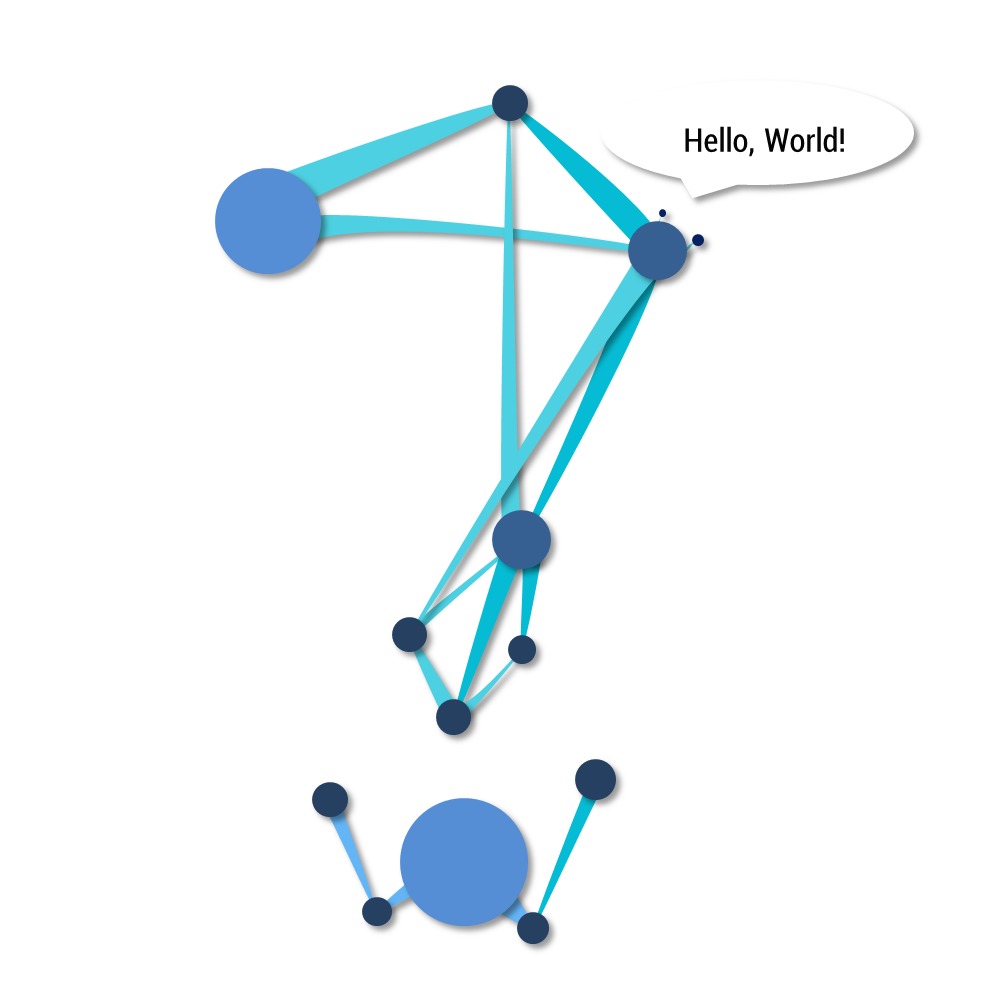Notice
Recent Posts
Recent Comments
NeuroWhAI의 잡블로그
[Keras] GAN으로 MNIST 이미지 생성하기 본문
※ 이 글은 '코딩셰프의 3분 딥러닝 케라스맛'이라는 책을 보고 실습한걸 기록한 글입니다.
GAN으로 MNIST 이미지를 생성하는 예제입니다.
책의 코드에서 뺀 부분이 많습니다.
코드:
1 2 3 4 5 6 7 8 9 10 11 12 13 14 15 16 17 18 19 20 21 22 23 24 25 26 27 28 29 30 31 32 33 34 35 36 37 38 39 40 41 42 43 44 45 46 47 48 49 50 51 52 53 54 55 56 57 58 59 60 61 62 63 64 65 66 67 68 69 70 71 72 73 74 75 76 77 78 79 80 81 82 83 84 85 86 87 88 89 90 91 92 93 94 95 96 97 98 99 100 101 102 103 104 105 106 107 108 109 110 111 112 113 114 115 116 117 118 119 120 121 122 123 124 125 126 127 128 129 130 131 132 133 134 | from keras import layers, models, optimizers from keras import datasets from keras import backend as K import matplotlib.pyplot as plt import numpy as np K.set_image_data_format('channels_first') print(K.image_data_format()) class GAN(models.Sequential): def __init__(self, input_dim): super().__init__() self.input_dim = input_dim self.generator = self.make_G() self.discriminator = self.make_D() self.add(self.generator) self.discriminator.trainable = False self.add(self.discriminator) self.compile_all() def make_G(self): input_dim = self.input_dim model = models.Sequential() model.add(layers.Dense(1024, activation='tanh', input_dim=input_dim)) model.add(layers.Dense(128 * 7 * 7, activation='tanh')) model.add(layers.BatchNormalization()) model.add(layers.Reshape((128, 7, 7), input_shape=(128 * 7 * 7,))) model.add(layers.UpSampling2D(size=(2, 2))) model.add(layers.Conv2D(64, (5, 5), padding='same', activation='tanh')) model.add(layers.UpSampling2D(size=(2, 2))) model.add(layers.Conv2D(1, (5, 5), padding='same', activation='tanh')) return model def make_D(self): model = models.Sequential() model.add(layers.Conv2D(64, (5, 5), padding='same', activation='tanh', input_shape=(1, 28, 28))) model.add(layers.MaxPooling2D(pool_size=(2, 2))) model.add(layers.Conv2D(128, (5, 5), padding='same', activation='tanh')) model.add(layers.MaxPooling2D(pool_size=(2, 2))) model.add(layers.Flatten()) model.add(layers.Dense(1024, activation='tanh')) model.add(layers.Dense(1, activation='sigmoid')) return model def compile_all(self): opt_D = optimizers.SGD(lr=0.0005, momentum=0.9, nesterov=True) opt_G = optimizers.SGD(lr=0.0005, momentum=0.9, nesterov=True) self.compile(loss='binary_crossentropy', optimizer=opt_G) self.discriminator.trainable = True self.discriminator.compile(loss='binary_crossentropy', optimizer=opt_D) def get_z(self, ln): return np.random.uniform(-1.0, 1.0, (ln, self.input_dim)) def train_once(self, x): ln = x.shape[0] z = self.get_z(ln) gen = self.generator.predict(z, verbose=0) input_D = np.concatenate((x, gen)) y_D = [1] * ln + [0] * ln loss_D = self.discriminator.train_on_batch(input_D, y_D) z = self.get_z(ln) self.discriminator.trainable = False loss_G = self.train_on_batch(z, [1] * ln) self.discriminator.trainable = True return loss_D, loss_G def get_x(x_train, index, batch_size): return x_train[index * batch_size:(index + 1) * batch_size] class MnistData(): def __init__(self): (x_train, y_train), (x_test, y_test) = datasets.mnist.load_data() img_rows, img_cols = x_train.shape[1:] x_train = x_train.astype('float32') - 127.5 x_test = x_test.astype('float32') - 127.5 x_train /= 127.5 x_test /= 127.5 self.num_classes = 10 self.x_train, self.y_train = x_train, y_train self.x_test, self.y_test = x_test, y_test def main(): batch_size = 100 epochs = 30 input_dim = 100 sample_size = 6 data = MnistData() x_train = data.x_train x_train = x_train.reshape((x_train.shape[0], 1) + x_train.shape[1:]) gan = GAN(input_dim) for epoch in range(epochs): print("Epoch", epoch) for index in range(int(x_train.shape[0] / batch_size)): x = get_x(x_train, index, batch_size) loss_D, loss_G = gan.train_once(x) print('Loss D:', loss_D) print('Loss G:', loss_G) if epoch % 2 == 0 or epoch == epochs - 1: z = gan.get_z(sample_size) gen = gan.generator.predict(z, verbose=0) plt.figure(figsize=(20, 2)) for i in range(sample_size): ax = plt.subplot(1, sample_size, i + 1) plt.imshow(gen[i].reshape((28, 28))) ax.get_xaxis().set_visible(False) ax.get_yaxis().set_visible(False) plt.show() if __name__ == '__main__': main() | cs |
결과:
Using TensorFlow backend.
channels_first
channels_first
Epoch 0
Loss D: 0.7338002
Loss G: 0.93040544
Loss D: 0.7338002
Loss G: 0.93040544
(중략)
Epoch 9
Loss D: 0.35202882
Loss G: 2.2948298
Epoch 10
Loss D: 0.46802875
Loss G: 1.4171509
Loss D: 0.35202882
Loss G: 2.2948298
Epoch 10
Loss D: 0.46802875
Loss G: 1.4171509
(중략)
Epoch 29
Loss D: 0.2630578
Loss G: 1.8819554
Loss D: 0.2630578
Loss G: 1.8819554
생성망을 만드는데 새로운 레이어가 등장했습니다.
BatchNormalization 레이어입니다.
각 배치의 입력마다 평균을 0, 편차를 1로 변환해서 출력해주는 레이어입니다.
오버피팅을 방지하는 등 드롭아웃과 비슷한 효과를 낸다고 합니다.
생성망의 전체적인 구조는 별다를게 없습니다.
노이즈 입력을 변환해서 업스케일링과 합성곱을 거쳐 이미지를 생성합니다.
판별기는 전형적인 CNN 모습이니 넘어갑니다.
다음은 컴파일인데 책에서는 생성망도 compile 메소드를 호출해줬지만 생성망 자체는 train 작업이 없습니다.
생성망과 판별망을 합쳐서 train하기 때문이죠.
그래서 그 부분은 빼고 했는데 잘 되는거 같습니다.
이전 글에서 trainable 속성 설명은 했으니 넘어가고
최적화기는 SGD(Stochastic Gradient Descent)를 썼네요.
Loss를 계산할때 전체 Batch가 아니라 Mini-Batch를 가지고 계산한다고 합니다.
get_z 메소드는 생성망의 입력으로 쓸 노이즈 데이터를 생성합니다.
train_once 메소드에서 판별망과 생성망+판별망을 차례로 한번씩 학습해주고 있습니다.
이때 판별망의 학습 데이터는 (Input: 실제 이미지*n + 생성된 가짜 이미지*n, Target: 진짜*n+가짜*n) 입니다.
생성망은 판별망이 진짜(1)라고 출력하게 해야하므로 학습 데이터는 (Input: 노이즈 데이터*n, Target: 진짜*n) 입니다.
그 다음은 별거 없습니다.
끝!
'개발 및 공부 > 라이브러리&프레임워크' 카테고리의 다른 글
| [TensorFlow] TensorFlow.js 소개 + 예제 실습 (1) | 2018.03.31 |
|---|---|
| [Keras] U-Net으로 흑백 이미지를 컬러로 바꾸기 (0) | 2018.03.29 |
| [Keras] GAN으로 입력 데이터의 확률분포 변환하기 (0) | 2018.03.24 |
| [Keras] Autoencoder로 MNIST 학습하기 (0) | 2018.03.20 |
| [TensorFlow] DCGAN으로 MNIST 이미지 생성하기 (최종) (0) | 2018.03.15 |
Comments







